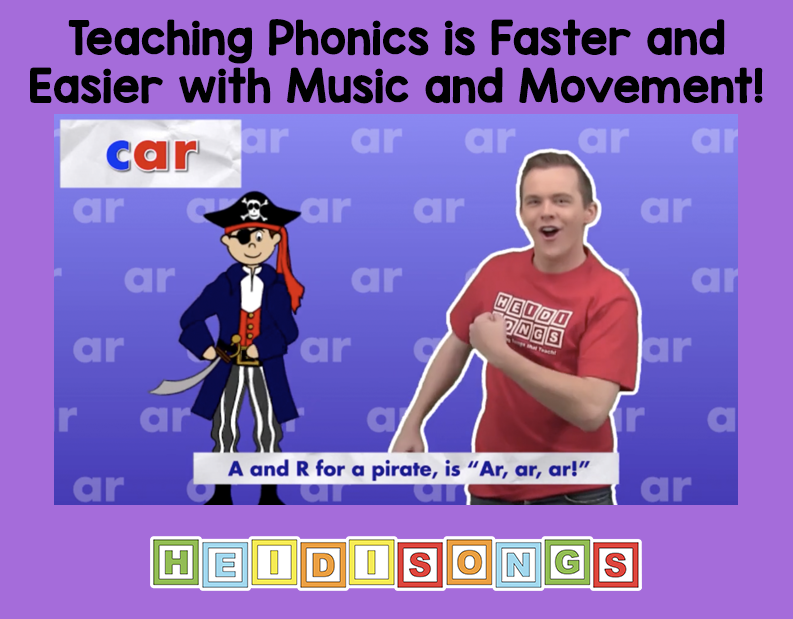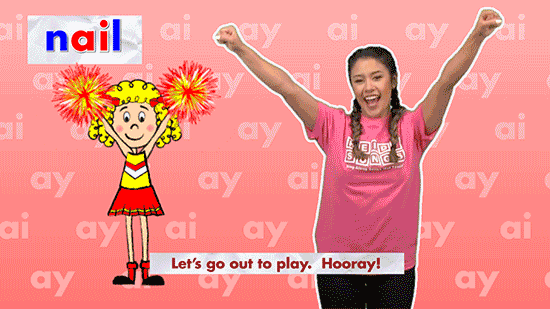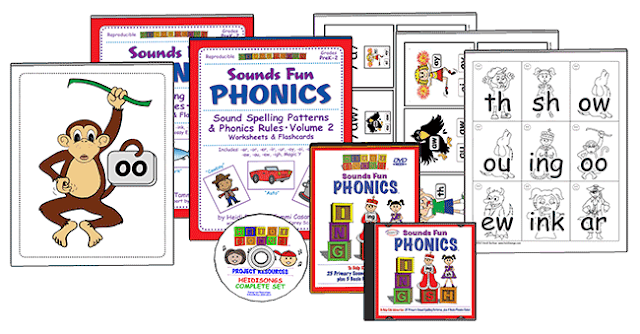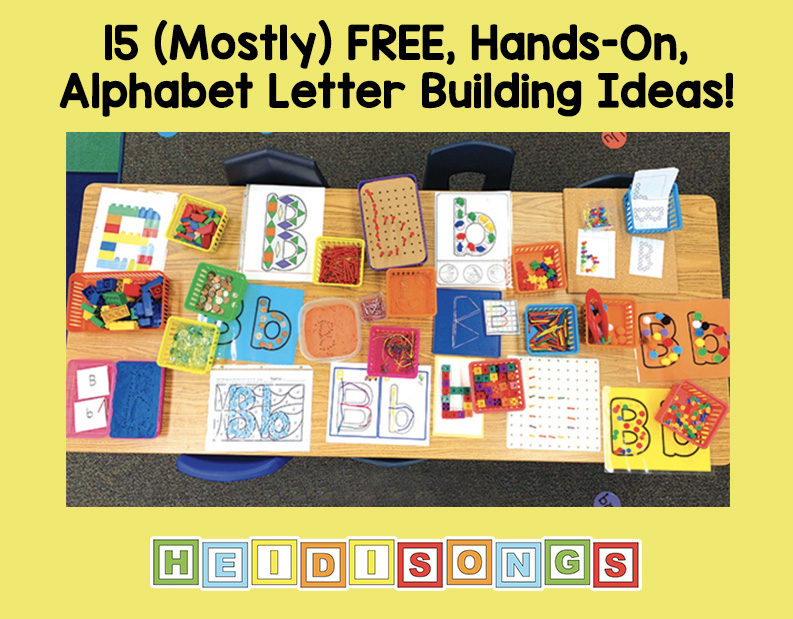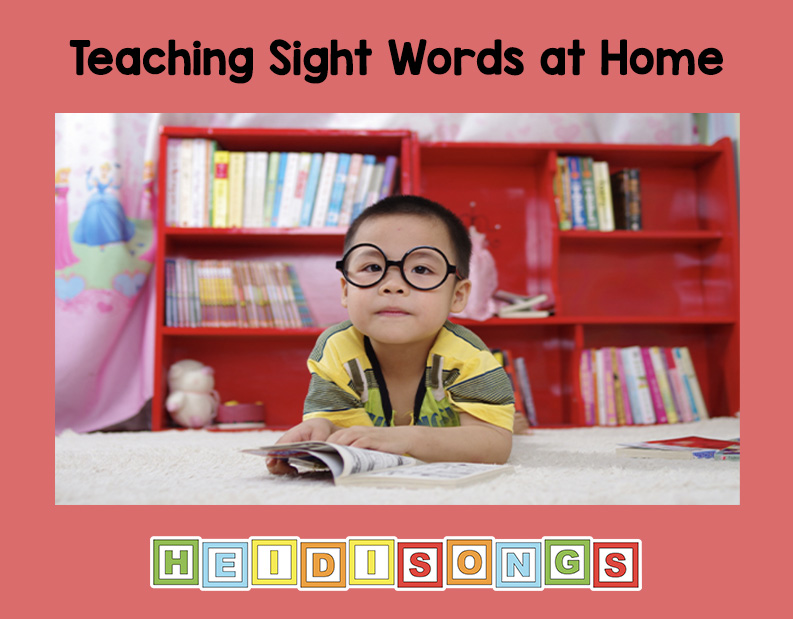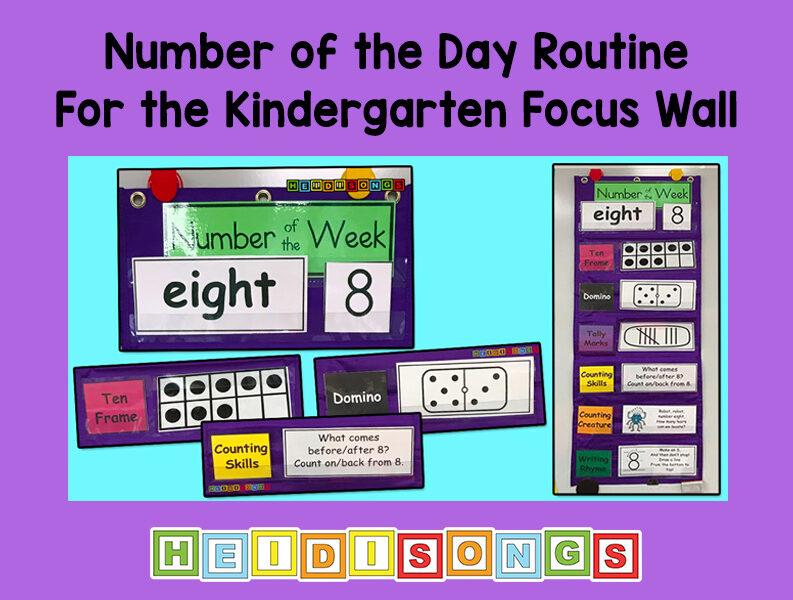Learning to sound out words with phonics is a vital part of learning to read. I, (Heidi), have always thought so, but now the collection of research known as the Science of Reading confirms it. In addition, we have long known that multi-sensory instruction that includes movement and music makes learning quicker and more engaging! Put those two elements together, and we have an amazing way to teach children to read! To find out more about how to use phonics with movement and music, read below.
How do HeidiSongs phonics videos work to help children learn?
Multi-sensory instruction is the key! When children see, say, hear, and MOVE simultaneously, the concepts tend to stick. Here’s why:
- The music is simple and catchy. (They HEAR it.)
- The movements keep even squirmy children engaged. (They are MOVING.)
- The letters are on the screen to keep children focused on the learning objective. (They SEE it.)
- The simplicity of the music prompts children to sing along, which makes learning more probable. (They SAY it.)
When we get children fully involved simultaneously in this way, they usually learn more, and are happier, too!
Take a look at the sample video below for the digraph “sh.”
HeidiSongs phonics videos teach 25 sound-spelling patterns and three phonics rules.
These 18 songs below teach 25 different sound spelling word families, plus three general rules for decoding.
- Ai/Ay
- Ar
- Au/Aw
- Ch
- Ea/Ee
- Er/Ir/Ur
- Ew
- Igh
- Ing
- Ink
- Oa
- Oi/Oy
- Oo
- Or
- Ou/Ow
- Sh
- Th
- Unk
- Final E Rule (Bossy E)
- Final Y Rule (“Magic Y”)
- Vowel Pairs Rule (“Vowel Walk”- When two vowels go walking, the first one does the talking.)
What does the research say about teaching phonics?
Below, the National Institute of Child Health and Human Development (NICHD) reports the following findings from the National Reading Panel. If you’re unfamiliar, the National Reading Panel was convened in 1997 to compare and summarize all of the existing research on reading instruction. The panel was then to make recommendations about best practices, according to a compilation of high-quality research studies.
“The findings of the Panel indicated that systematic phonics instruction provides beginning readers, at-risk readers, disabled readers, and low-achieving readers with a substantial edge in learning to read over alternative forms of instruction not focusing at all or only incidentally on the alphabetic system.” Report of the National Reading Panel, page 153
In all of their findings, schools that taught children to read with phonics had much greater success in producing readers than those that did not.
Animations and movements make it fun and engaging!
Kids love the animations in these videos because they make it so much more fun! Also, notice that some words from the target word family are printed on the upper left-hand side of the screen as the video plays. Those words rotate throughout the song.
Once, I had a precocious little kindergarten boy that LOVED to shout the words out as they appeared on the screen! He was reading fluently by the end of kindergarten as a result! In fact, he just graduated from high school with high honors. 😃 As you can imagine, the parents of my students were THRILLED that their children were so happy and learning so much.
Decoding Practice Included!
A few years back, we included a “sound it out” section after each song for decoding practice. Here’s how it works:
- First, a picture for each word is shown.
- Then, the letters for the word fly in, one phoneme at a time.
- A voice gives the sound for each one and then reads the whole word.
- The children are expected to do this along with the voice on the screen.
Watch this example below to check it out!
- The children are being shown just one sound at a time, and hence how to sound out the word.
- Children that can do this will know exactly how to segment the sounds (give all of the sounds) in the words.
- Kids that can segment the sounds will very likely be able to spell every single word, once they have memorized the spellings of the chunks.
- The video is PATIENT and CONSISTENT– probably much more so than you or I! So even if a child keeps calling out the entire word at the beginning of each sequence, it will STILL keep sounding each word out. This is wonderful for special needs children that just really need that repeated practice, again, and again, and again.
Even better, if you need/want to skip over this section for any reason at all, it’s super easy. Just advance to the next song. Easy peasy!
Other Supporting Materials
Here are some tools that I always used along with the videos! The ones I couldn’t live without are the Phonics Flashcards, the Word Building Kit, the Phonics Bingo Game, and the Phonics Worksheets.
Isn’t this too hard for Kindergarten?
I found it interesting that the National Reading Panel said that phonics instruction was most successful when started in Kindergarten- before most children know how to read. That way, they would start sounding out words right from the beginning and not have to change any bad habits.
I, (Heidi), used the original Sounds Fun videos in Kindergarten every single year after I created it! But the key is that I used it to teach them how to WRITE words more easily, not read them. It REALLY helped them learn to write phonetically because it gave them a guide for writing the sounds that didn’t fit into the basic short vowel sound spelling patterns that they had been taught. In fact, that’s the whole reason why I came up with it- to give my kids a way to spell those other sounds.
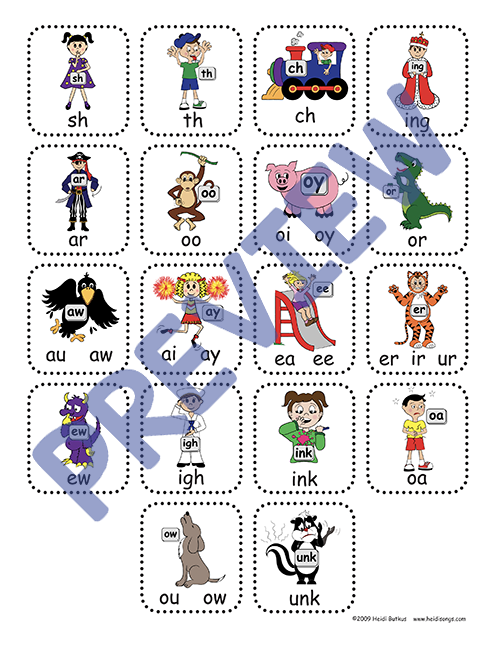
– Heidi
———————————-
Don’t forget to SUBSCRIBE to HeidiSongs.tv Internet Videos, and follow us Instagram, Facebook, or Twitter! Check out our main website at HeidiSongs.com, and find us on Teachers Pay Teachers right here.

